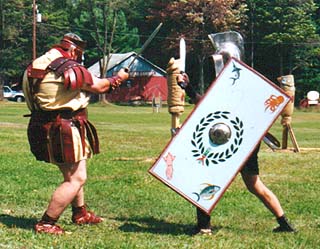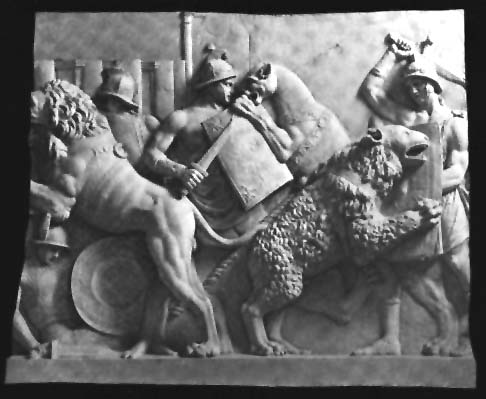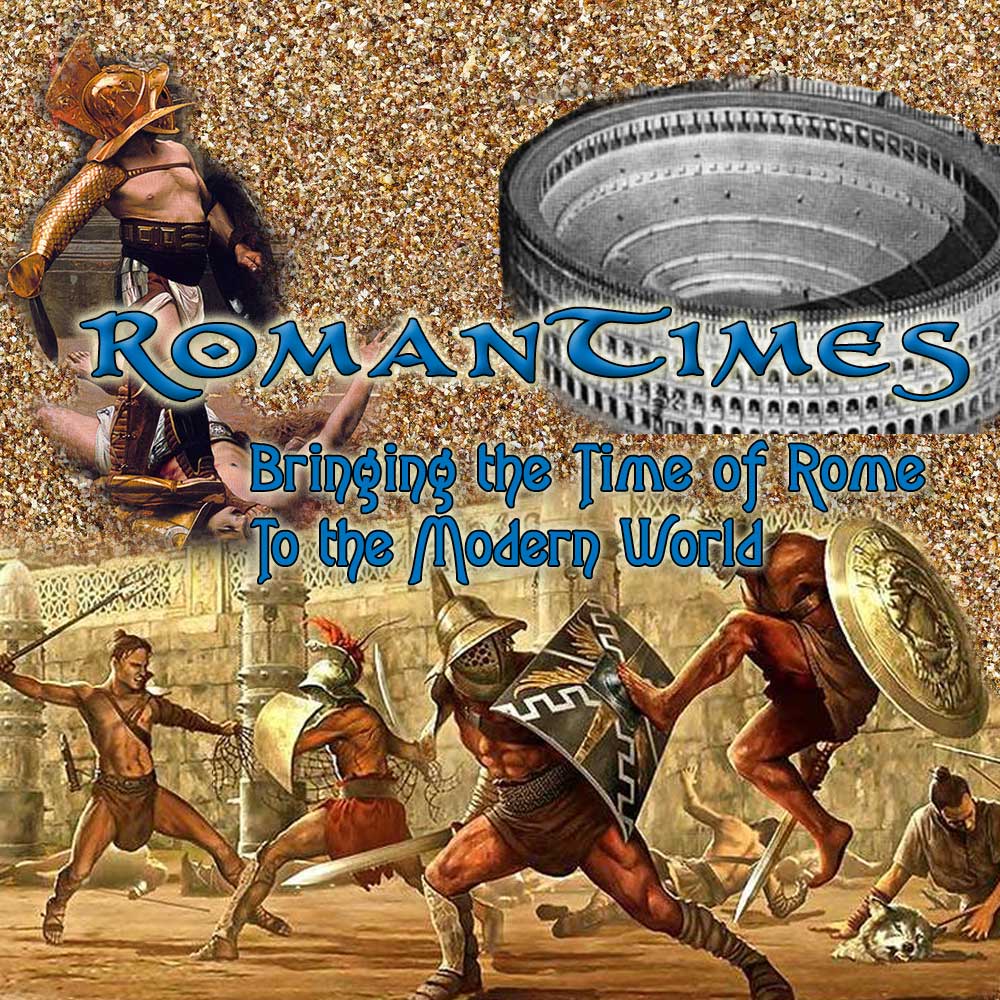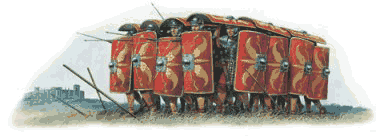Bread and Circuses

"Samnite" Maximus Gladius.
Note the "Palus" practice posts to rear.
Spectacular entertainment for the masses and the exercise of political power were the hallmark of the Roman Imperial Era. "Bread and Circuses" (Panem et Circences) were what the Roman people demanded of their Emperor in a reciprocal relationship that generally suited both parties well. "Giving to Receive" (Euergetism) was a well established practice of the power brokers of the Roman world and to receive the loyal support of the people, these "Leaders" gave them spectacular games, spectacles and entertainment munus (a gift or favor of entertainment) from the First Century BC to the end of the Fourth Century AD.
Gladiators or "Sword Men" got their name from the Gladius short sword (about 27" long) that was carried by Roman solders and also used by fighters in the arena. "Gladius" was also a vernacular Latin term for the penis and in popular imagination many gladiators were thought to be symbols of virility. Women were said to covet the sweat of gladiators as an aphrodisiac. Many gladiators became popular and wealthy with their flamboyant personalities and fighting prowess in the arena; much like the wrestlers, boxers and sports stars of today.
The culture that produced the gladiators also created the atmosphere that eventually led to their extinction in the early 4th century AD. After the conversion of Constantine the Great to Christianity and his coming to power as Emperor in 312 AD, he issued an edict abolishing gladiatorial combat in 23 but even this did not allow them to completely suppress the games.
Although Christianity had been established as the official state religion of the Roman Empire, in 312; it would still be 92 years before gladiatorial combat was finally abolished. In AD 404, a tragic event finally put an end to the games. A Christian monk named Telemachus jumped into an arena in Rome and tried to separate two combatants. The crowd went berserk, climbed over the walls into the arena and tore the monk limb from limb. In response to this ugly incident, Emperor Honorius permanently banned all gladiator contests. Unlike Constantine, he enforced the ban. The era of the gladiator was over. So, it was Christianity that was primarily responsible for bringing an end to gladiatorial combats.

Violence and cruelty have continued to be all too common
in world history, but never again have amphitheaters been
filled with crowds of people gathered to watch men who
were expected to maim or kill each other for
port and entertainment.
As Much as Things Change...
While it has been 1600 years since the last gladiator walked into the arena, many elements of their games are alive and well today. The elements of the Roman games can be readily recognized in the football, hockey, western rodeo, bull-fights, boxing and wrestling matches conducted today; where the participants don armor, employ game weapons, assume colorful names and titles and in many instances, gain great popularity and wealth. Women still swoon over such men.
Modern horse and auto racing events are not much different from what Roman citizens witnessed in the Circus-Maximus in Rome, where with the same speed and excitement, horses were raced "cursu equestri certare" (***) and chariots competed "curriculi" (***) and collided for the enjoyment of the cheering crowds. The heavy betting on the outcome of the races (certari) and games (ludi) has hardly changed over the centuries. Bulldogging (Thessalonian (from Thessaly in Greece) bull-fighting) where a bull is wrestled to ground by its horns, was introduced to Rome by Julius Caesar.
Almost every modern circus act was perfected in Rome, 2000 years before P.T.Barnum and the Ringling Brothers were born. Trained lions and tigers, dancing bears, acrobats, clowns and jugglers had the same attraction to ancient Romans as they do to modern audiences today. It surely is true that history repeats itself.












